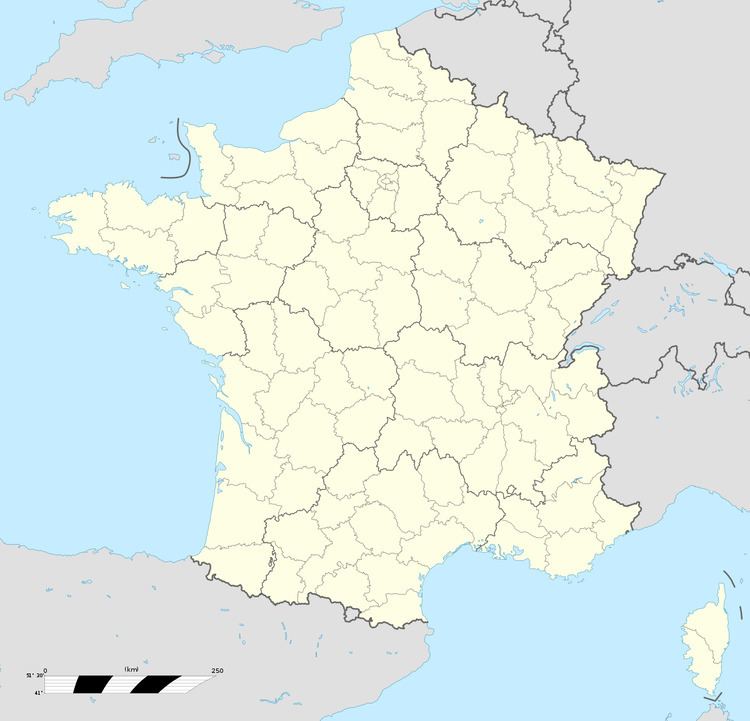Address 57070 Metz, France | Year built 1872 | |
 | ||
Type fort of type von Biehler Fate destroyed in order to build road Similar Auto Ecole Weber, Driving School Rallye, Driving School Mario, Driving School Charly, Cerest | ||
The Feste von Zastrow, renamed Fort des Bordes by the French in 1919, is a military structure located in the district of Boric in Metz. It is part of the first fortified belt of forts of Metz. Buried since the construction of the expressway east to it in 1968 It is covered by a green area, some remnants remain visible.
Contents
Historical context
The first fortified belt of Metz consists of forts de Saint-Privat (1870) of Queuleu (1867), des Bordes (1870) Saint-Julien (1867), Gambetta, Déroulède, Decaen, Plappeville (1867) and St. Quentin (1867), most unfinished or simply used as is in 1870, when the Franco-Prussian War burst out. During the Annexation, Metz will oscillate between a German garrison of 15,000 and 20,000 men at the beginning of period, and will exceed 25,000 men before the First World War gradually became the first stronghold of the German Reich.
Construction and facilities
The fort Zastrow is designed in the spirit of the "detached forts" concept developed by Hans Alexis von Biehler in Germany. The goal was to form a discontinuous enclosure around Metz with strong artillery batteries spaced with a range of guns. The interval between the Fort Queuleu ( Goeben ) and the Fort Saint-Julien ( Manteuffel ), being judged excessive, it was decided to strengthen the fortified line by building Fort Zastrow. The Feste Zatrow was quickly built by German engineers between 1873 and 1875.
Successive assignments
From 1890 the relief of the garrison is guaranteed by the fort troops Corps XVI stationed at Metz and Thionville. The Fort des Bordes serves as a depot and barracks from 1873-1918. Then it is reinvested by the French army in 1919, and serves as an internment camp for draft evaders and deserters. In 1940, the fort is reinvested again by the German army. It is not remilitarised after 1945. The Fort des Bordes is closed permanently in 1954.
Second World War
In early September 1944, at the beginning of the Battle of Metz. the German command integrates the defensive system set up around Metz. On September 2, 1944, Metz was declared in effect by the Reich fortress Hitler. The fortress must be defended to the last by German troops, whose leaders were all sworn to the Führer. The next day, September 3, 1944, General Krause, then commander of the fortress of Metz, established his High Command, the main command post in the barracks fort Alvensleben. Fort Plappeville was indeed the center of the defenses of Metz, with the west fort Manstein (Girardin), run by the SS colonel Joachim von Siegroth, North Fort Zastrow (Les Bordes) held by SS Colonel Wagner and south Fort Prince August von Württemberg (Saint-Privat) held by the SS colonel Ernst Kemper. The same day, the troops of General Krause took position on a line from Pagny-sur-Moselle to Mondelange, passing to the west of Metz by Chambley, Mars-la-Tour, Jarny and Briey.
On November 9, 1944, no less than 1,299 heavy bombers, both B-17s and B-24s, dump 3,753 tons of bombs, 1,000 to 2,000 "livres" on fortifications and strategic points in the combat zone of IIIrd army. Most bombers dropped bombs without visibility at over 20,000 feet, so the military targets were often missed. In Metz, 689 loads of bombs hit the seven Forts designated as priority targets. The bombing did nothing but cause collateral damage. At Thionville and Saarbrücken, the result is inconclusive, proving once again the inadequacy of the massive bombing of military targets.
But one by one, the isolated forts, attacked by the advancing troops 95th Infantry Division to the north, and 5th Infantry Division to the south, succumb. The Fort des Bordes is taken by 5th Infantry Division, part of Patton's army on November 21, 1944 at the end of the Battle of Metz. The fort Jeanne-d’Arc was the last of the forts of Metz to surrender. Determined German resistance, bad weather and floods, inopportunity, and a general tendency to underestimate the firepower of the fortifications of Metz, have helped slow the US offensive, giving the opportunity to the German Army to withdraw in good order to the Saar. The objective of the German staff, which was to save time by stalling US troops for the longest possible period, before they could advance to the front of the Siegfried Line, has been largely achieved.
